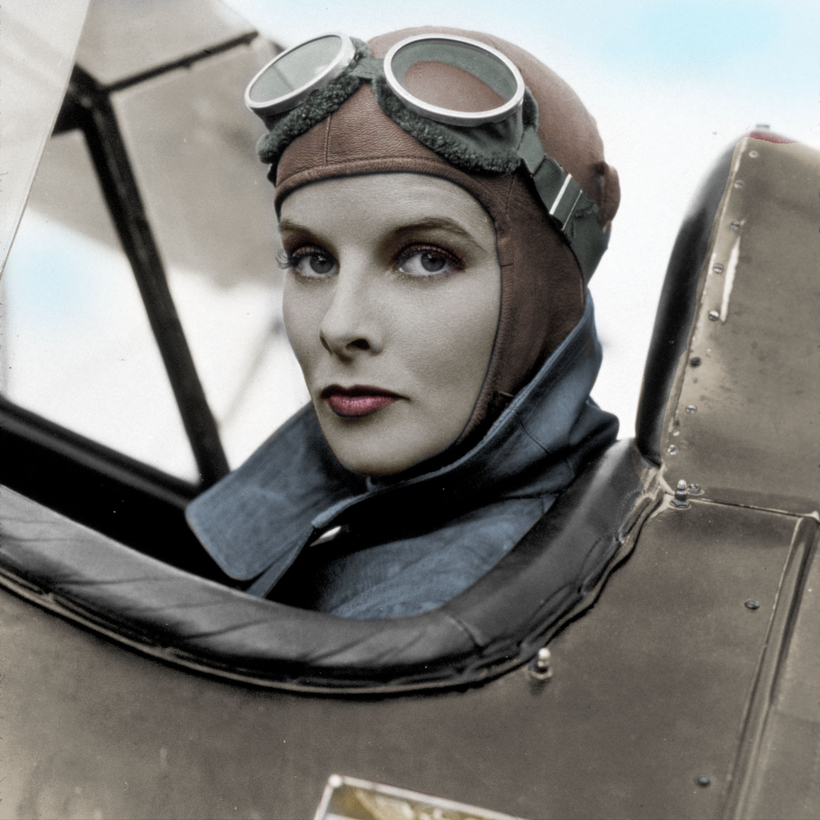In 1917 Universal Studios released eight films with women credited as directors; 100 years later the same studio produced just one, Pitch Perfect 3. That is the surprising reality behind Helen O’Hara’s fascinating polemic, Women vs Hollywood: The Fall and Rise of Women in Film.
Anybody who has watched the latest in the Wonder Woman franchise, “helmed” by a woman, Patty Jenkins, might assume that women were taking their rightful place in mainstream Hollywood just as Kamala Harris is doing in the White House. But as a new wave of feminist film historians and critics like O’Hara are revealing, this is no steady climb, but a U-shaped recovery.

One of the first people to realize the potential of film to tell stories, as opposed to capturing real life, was a young Frenchwoman called Alice Guy, who worked as an assistant to Léon Gaumont. In 1896 she asked to borrow the company camera. “It seems like a silly, girlish thing to do, but you can try if you want,” she remembered her boss responding. Alice shot a fanciful story called La Fée aux Choux, or The Cabbage Fairy. It was only 30 seconds long, but it was the beginning of film as a narrative art form.
Alice went on to become head of production at Gaumont and then, having married a cameraman called Herbert Blaché, moved to New York. Here the couple started a studio, Solax, and Alice made films with a feminist slant such as Making an American Citizen (1912), in which an eastern European immigrant learns, through a series of vignettes, that he must treat his wife respectfully to assimilate into his new culture. Alice’s film career ended when her husband left her and she nearly died of Spanish flu.
The American women who followed her — such as Lois Weber, who was a contemporary of DW Griffith and Cecil B DeMille, was considered their equal, made more than 200 films and pioneered the split-screen technique in 1913 — have until now been written out of cinema history.
As this book makes clear, the early days of Hollywood were full of female directors, writers, producers and actors; in the 1910s there was a perception that women were needed to transform what could be a rather dodgy back-room medium (porn was prevalent) into wholesome family-friendly entertainment.
The first film star was a woman — Florence Lawrence, the Biograph Girl — and in 1916 probably the most powerful person in Hollywood was Mary Pickford, who not only starred in films and collaborated on scripts, but in 1919 founded a film studio with her husband, Douglas Fairbanks, and set up United Artists with Fairbanks, Charlie Chaplin and Griffith. Pickford and her friend Frances Marion, a screenwriter, not only had power, they also tried to promote other women — Marion held “cat parties”, or what we would now call female networking events.

However, in the 1920s Hollywood morphed from a scrappy creative frontier, making up the rules as it went along, into a moneymaking machine where the studios took over distribution. The new corporate structures in this system were exclusively white and male. Directing came to be seen as a man’s job, and the only female director to work steadily through the 1930s was Dorothy Arzner, a lesbian with an Eton crop who wore the jodhpurs-and-boots combo popularized by DeMille. She discovered Katharine Hepburn, casting her as an aviator in her first movie, Christopher Strong (1933).

The power of Hollywood to shape the nation’s character meant that after a series of sex scandals the studios came under pressure to clean up their act. When in 1928 Clara Bow, then the biggest female star in Hollywood, refused to sign a morality clause (which prohibited drinking and “immoral behavior”), the studio held back $25,000 from her contract, which she forfeited when cited as a co-respondent in a divorce case.
The sexually prudish, homophobic censorship imposed by the 1934 Hays Code, which constricted the kinds of stories that could be told, was not all bad for actresses, though — fewer sex workers on screen meant that women were playing lawyers, journalists, business tycoons: Hepburn in Adam’s Rib (1949), Rosalind Russell in His Girl Friday (1940), Joan Crawford in Mildred Pierce (1945).
The New Hollywood
Ironically, O’Hara points out, it was when the “New Hollywood” male directors such as Martin Scorsese, Francis Ford Coppola and Steven Spielberg came into their own in the late 1970s, free from the constraints of censorship, that these powerful female parts dried up and women were back to playing sex workers and love interests.

Even in an age of increasing equality off screen, the cult of the auteur, in the US almost exclusively male, led to a preponderance of the male gaze. The number of films that would pass the “Bechdel test” (where two female characters talk about something other than a man) is only now starting to equal the Golden Age of Hollywood.
Yet institutional inequality continues: female stars earn considerably less than their male peers; only one woman, Kathryn Bigelow, has won a directing Oscar (not surprisingly, as the people who vote in this category are almost exclusively older white men); and the horrors of the casting couch led to #MeToo abuses. With the result that much of the best female talent (Shonda Rhimes, Jill Soloway, Sally Wainwright) works in the slightly less sexist world of television.
If Hollywood is to survive as more than a machine that churns out superhero franchises, it needs to get back to its roots and put women properly at the heart of the picture.
Daisy Goodwin is the author of numerous books, including My Last Duchess, The Fortune Hunter, and Victoria
